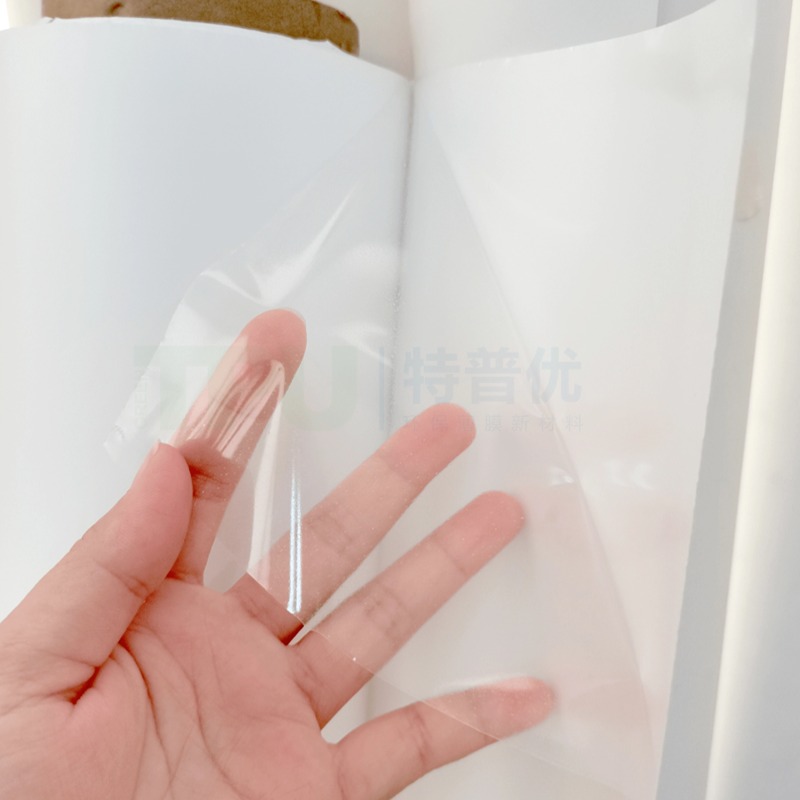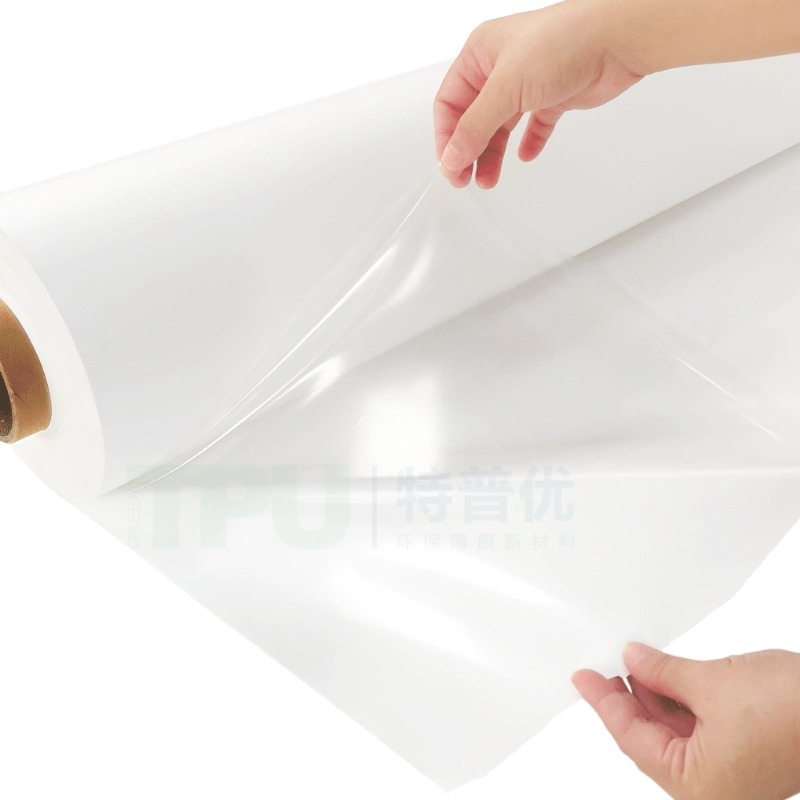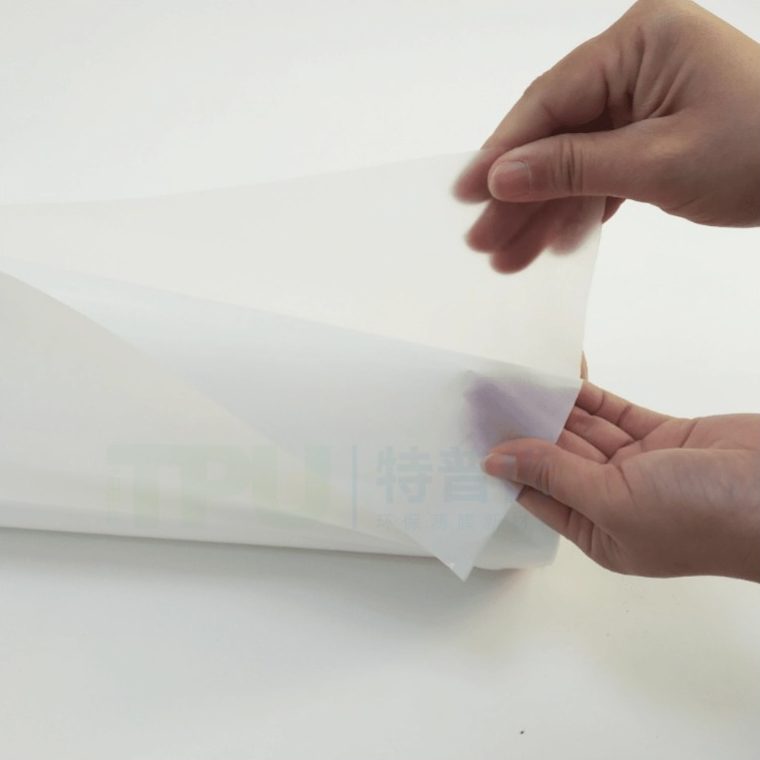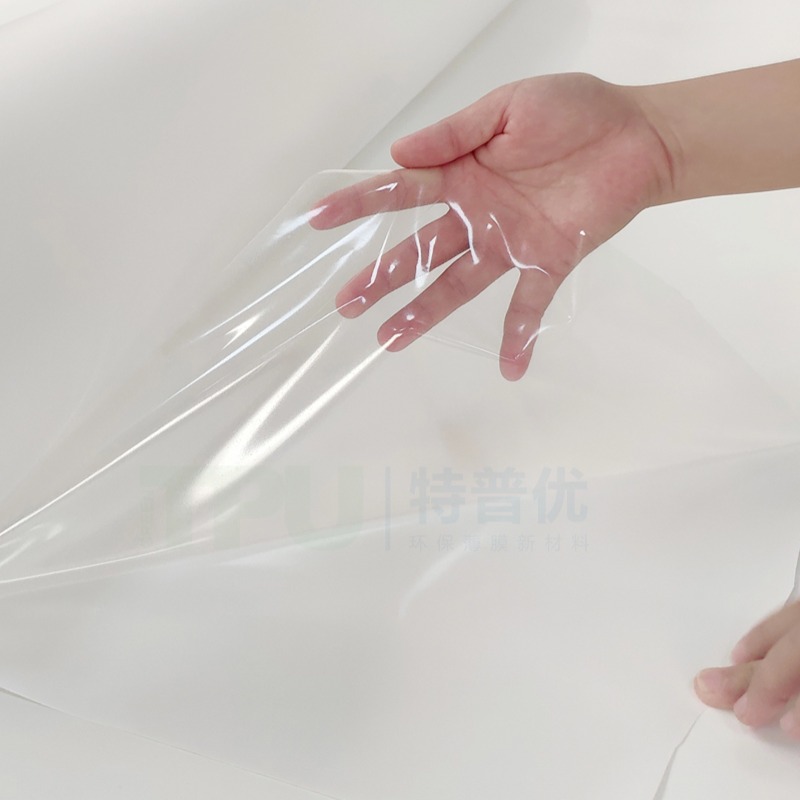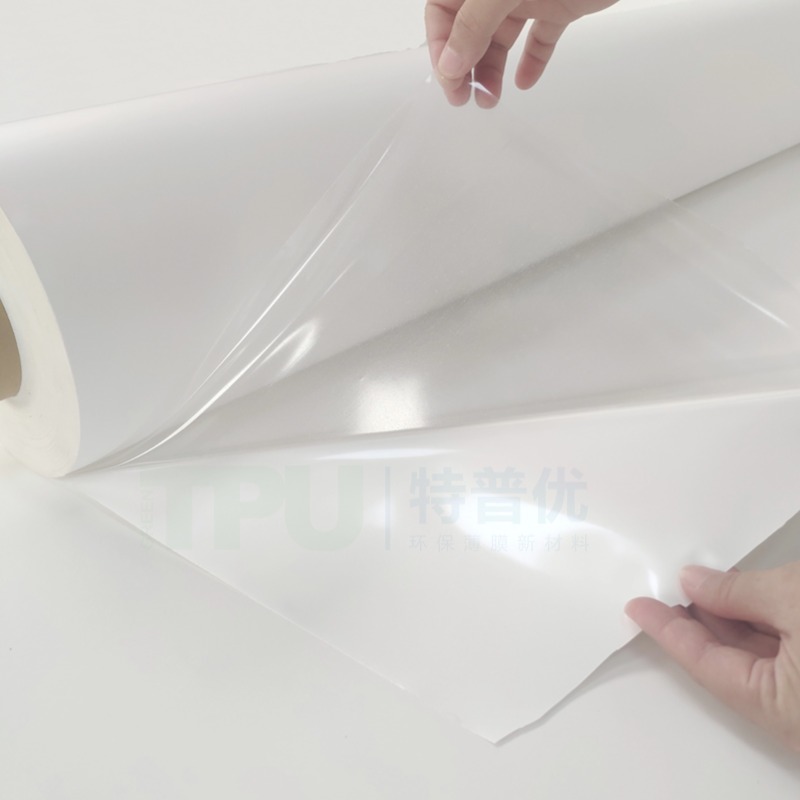
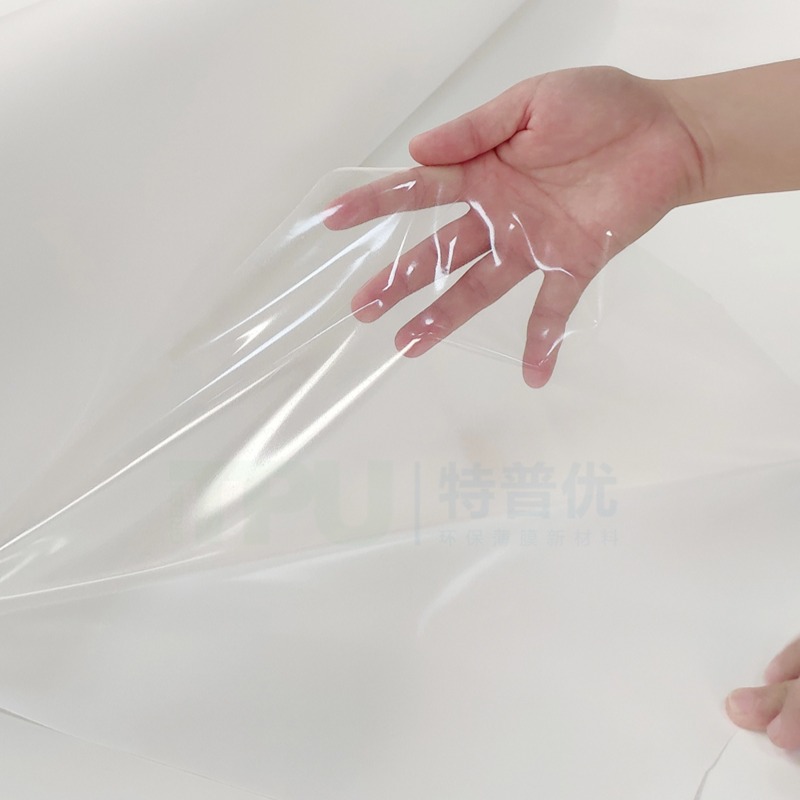
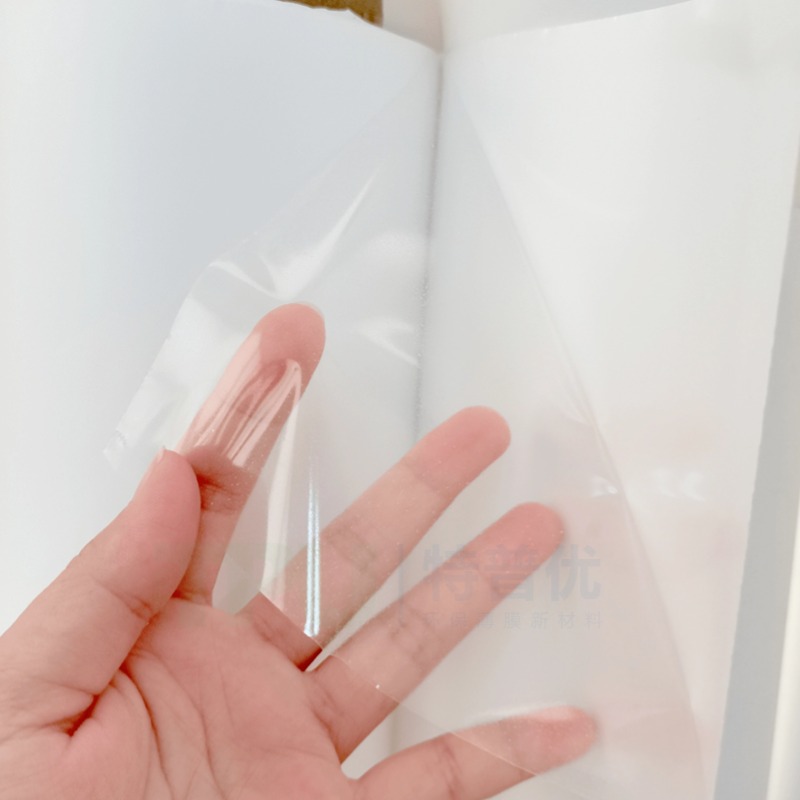
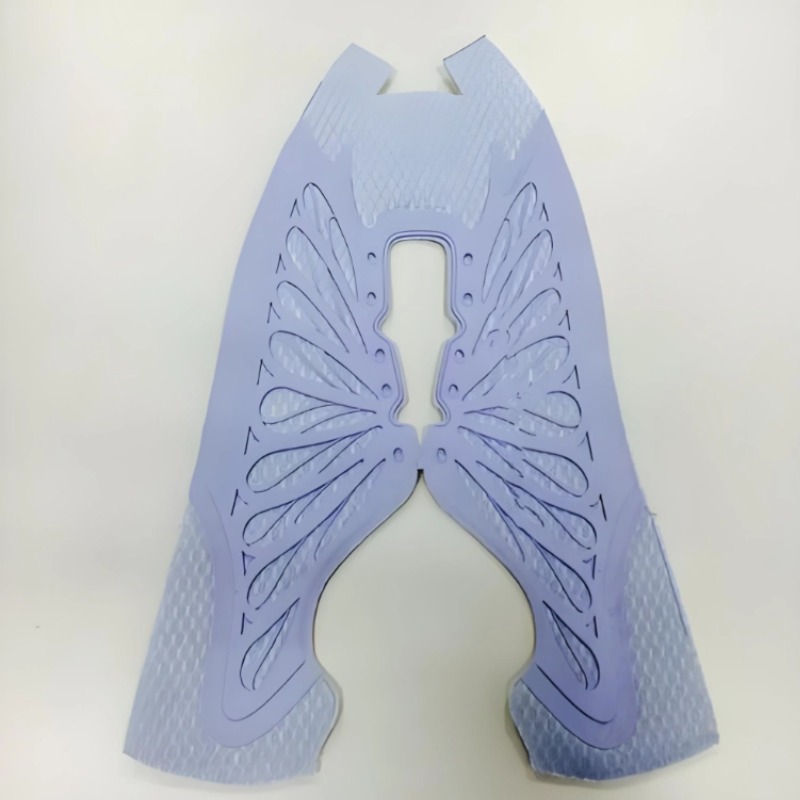
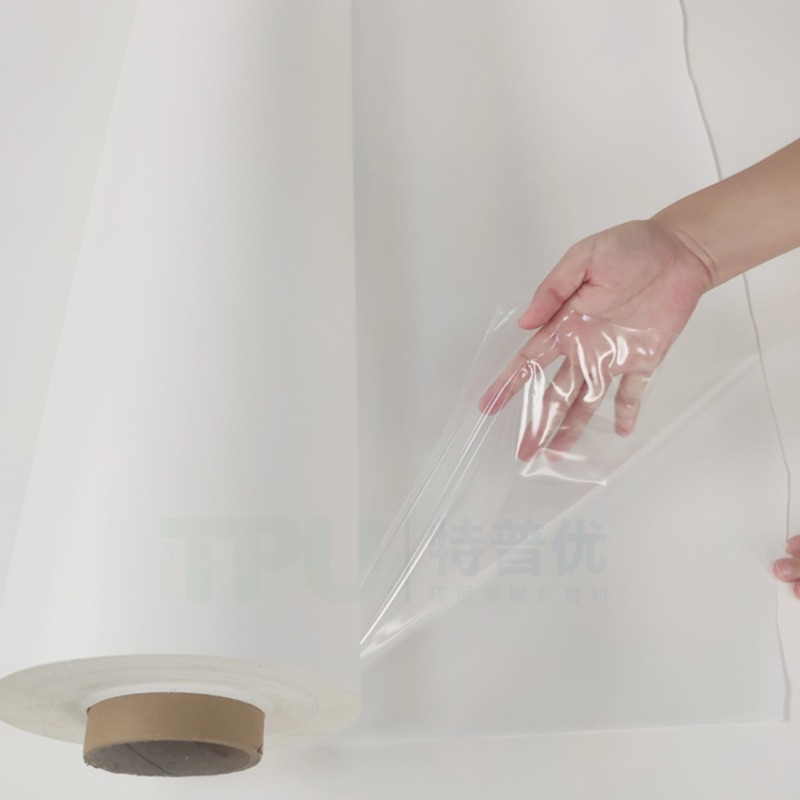

TPU Hot-Melt Adhesive Film for Footwear Material Laminating | Hydrolysis-Resistant & High Elasticity | Preferred Choice – GREEN TPU
This TPU adhesive film provides soft touch, high elasticity, and stable lamination performance, making it an ideal choice for bonding shoe uppers, linings, leather, mesh fabrics, and foam materials. It supports various processing methods, including heat pressing and flat lamination, with clean and environmentally friendly production—no solvent, no odor, and recyclable.
- Product Name: TPU Hot Melt Adhesive Film
- Substrate Type: Polyester Type (TPU-PE)
- Substrate Type: Polyester-based (TPU-ET)
- Adhesive film with substrate: Protected by release paper/release film
- Substrate-free adhesive film: Direct winding, no protective film
- Thickness: 0.03-2.0mm
- wide width: 152 cm, customizable to any width as required
- Color: True Colors
- Temperature range: -40°C ~ 120°C
- Environmental Certification: RoHS, REACH, Halogen, Heavy Metals
Product Application
TPU hot melt adhesive film from GREEN TPU has become fully integrated into modern footwear manufacturing due to its exceptional bonding properties, outstanding elasticity, eco-friendly characteristics, and efficient processing methods. It serves not only as a key technical material for enhancing shoe quality, durability, and comfort, but also as a vital force driving the footwear industry's transformation toward automation, sustainability, and high performance. For footwear brands pursuing premium quality and environmentally conscious production, GREEN TPU hot melt adhesive film is an indispensable choice.
- Upper Lining (Composite Layers)
TPU hot melt adhesive film is widely used to laminate multiple material layers of the shoe upper, including leather-mesh composites, patchwork of colored fabrics, or reinforcement layers in the heel and toe box. Its seamless bonding replaces traditional stitching, resulting in a cleaner, more modern aesthetic while reducing weight and improving fit. The high elasticity and adhesion ensure long-lasting performance even under repeated flexing. - Upper-to-Sole Bonding (Welting)
In critical applications like bonding the upper to the midsole or outsole (rubber, EVA, PU, or similar), GREEN TPU film delivers exceptionally high bonding strength. It maintains integrity under prolonged bending, impact, and repeated sole flexing, significantly reducing the risk of adhesive failure. Its elastic properties ensure a secure, durable interface over the lifetime of the shoe. - Seamless Waterproof Shoe Manufacturing
For waterproof footwear, a waterproof membrane is bonded to the upper fabric using GREEN TPU hot melt adhesive film. Through heat pressing, the adhesive film melts and forms a strong bond while simultaneously sealing the seams. This provides reliable waterproof performance without additional coatings or adhesives. - Processing Flow
Typical manufacturing steps include material preparation, positioning the adhesive film between materials, heating with hot presses or infrared equipment, applying controlled pressure to achieve uniform bonding, and cooling to set the adhesive. Process parameters such as melting point, activation temperature, and applied pressure must be optimized based on the material and equipment to achieve the best results.
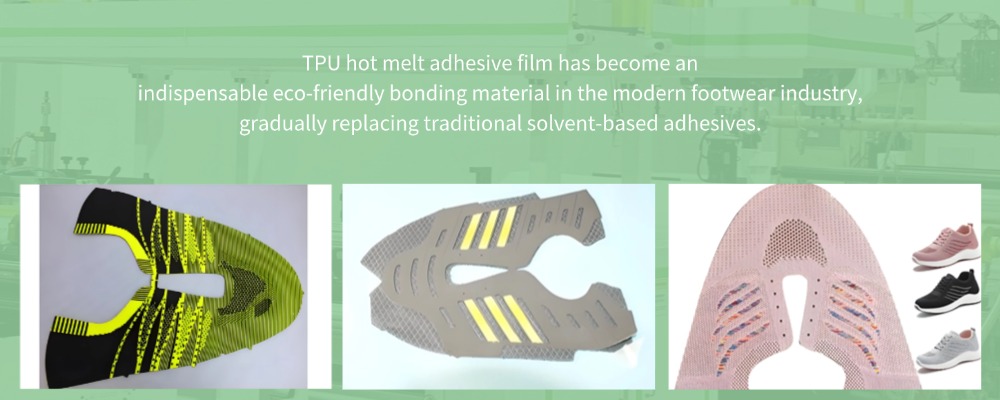 |
Product Details / Why Choose Our TPU Hot Melt Adhesive Film?
As a source factory, GREEN TPU specializes in solvent-free, environmentally certified TPU hot melt adhesive films. Our materials are non-toxic, odorless, recyclable, and fully compliant with global RoHS and REACH regulations. They are safe for direct contact with fabrics used in apparel, footwear, medical, and baby-care products.
- Superior Bonding and Elasticity
Our films provide strong, uniform adhesion to a variety of materials including leather, mesh, foam, non-woven fabrics, and coated textiles. High elasticity ensures durability during repeated bending and flexing, maintaining seam integrity and structural reliability. - Eco-Friendly and Safe
Being 100% solvent-free and non-toxic, GREEN TPU films support clean, sustainable production processes. They minimize environmental impact and provide safe handling for operators and end-users alike. - Long-Term Durability and Anti-Aging
The film offers excellent resistance to hydrolysis, humidity, UV exposure, and aging. It maintains clarity, softness, and bonding strength over time, ensuring the final footwear product remains durable and aesthetically pleasing. - Wide Compatibility with Manufacturing Methods
GREEN TPU hot melt adhesive film supports heat pressing, flat lamination, and roll-to-roll automated processes. It melts evenly, bonds consistently, and integrates easily into various production lines, improving efficiency and reducing labor costs. - Comparative Advantages Over Traditional Adhesives
Compared with solvent-based adhesives, GREEN TPU provides superior environmental performance, higher production efficiency, enhanced safety, stable and uniform bonding, aesthetically clean seams, and overall lower lifecycle costs despite slightly higher material cost. - Customizable Specifications for OEM Needs
Thickness, width, melting point, tack, and elasticity can all be tailored to meet the specific production requirements of footwear brands and manufacturers, ensuring optimal performance, comfort, and product quality.
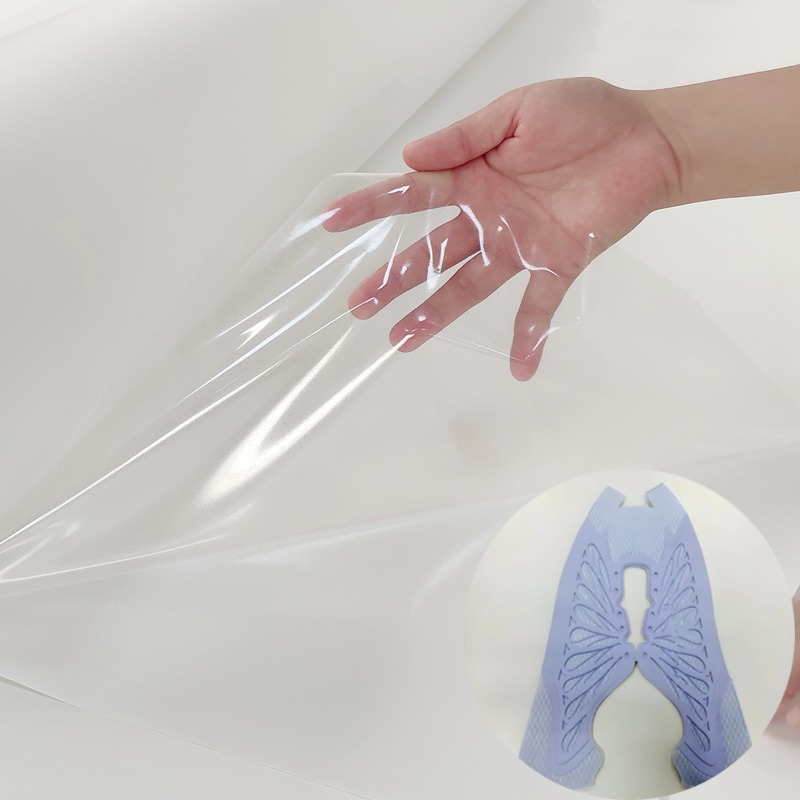 | 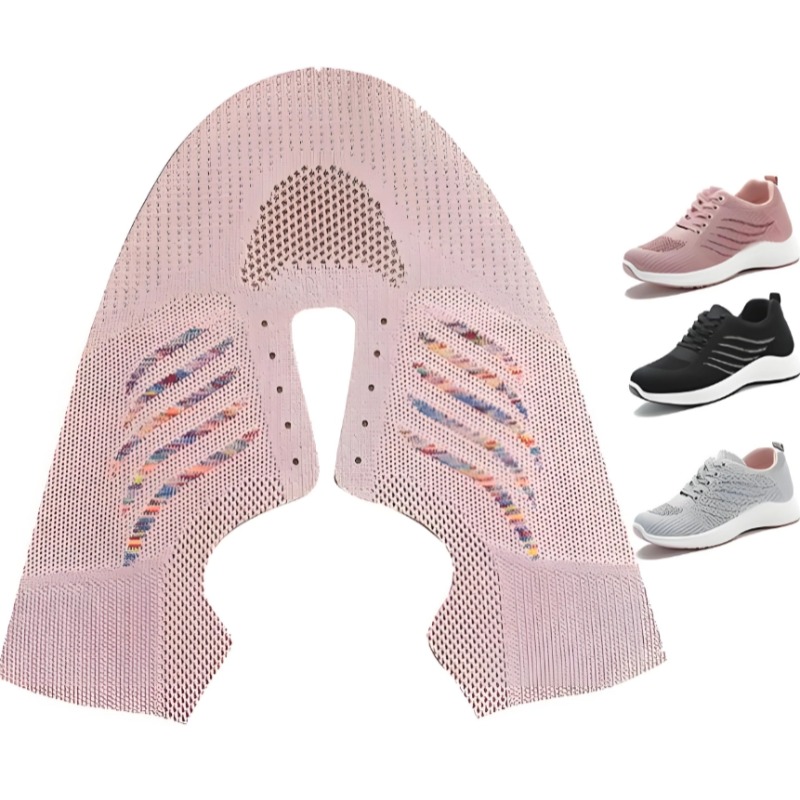 |
Why choose us?
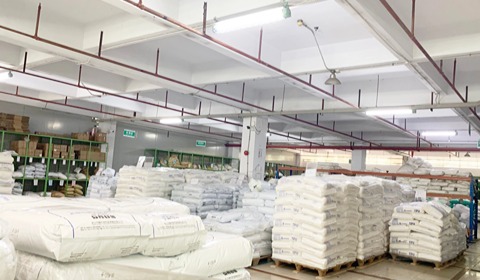 | 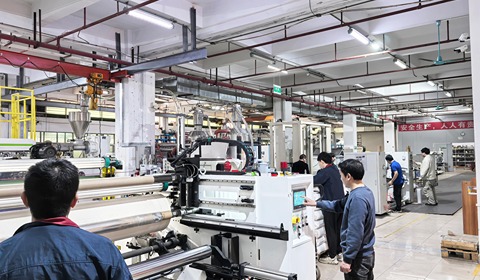 | |
| Raw material warehouse stocked with 300 tons of raw materials | Advanced high-efficiency TPU film production equipment | |
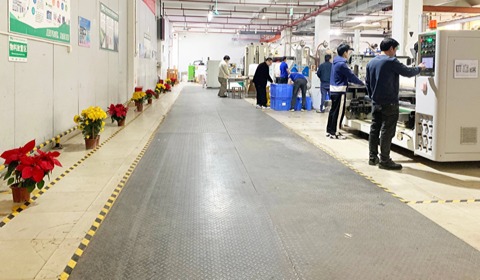 | 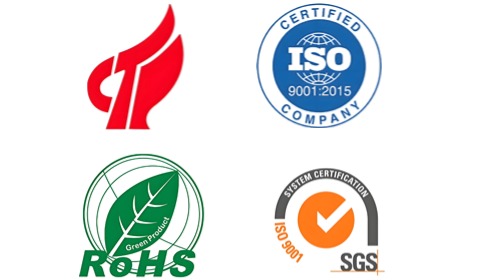 | |
| Directly supplied by the manufacturer, fully automated production line, annual output of 6,000 tons | Our TPU film quality production management system has been certified by ISO9001, ROHS, SGS, etc |
FAQ
Q: Are you a trading company or a manufacturer?
A: We are an integrated industry and trade company specializing in the manufacture and export of TPU film materials for over 15 years.
Q: Can we customize performance, size, and color?
A: We accept customization of various specifications.
Q: Do you provide sample services?
A: We can now provide a certain quantity of samples free of charge for projects we have completed. You only need to cover the shipping costs.



